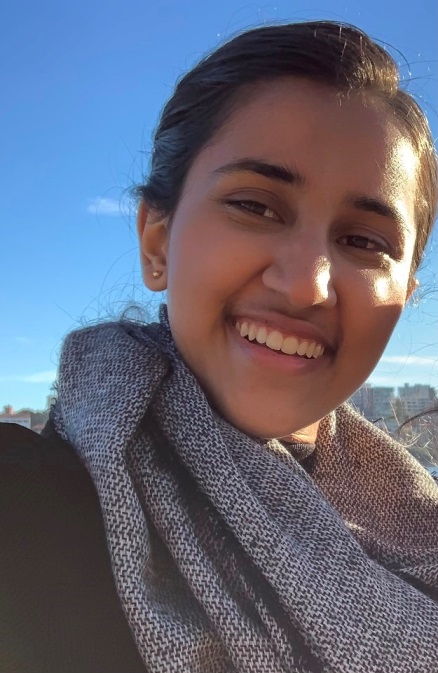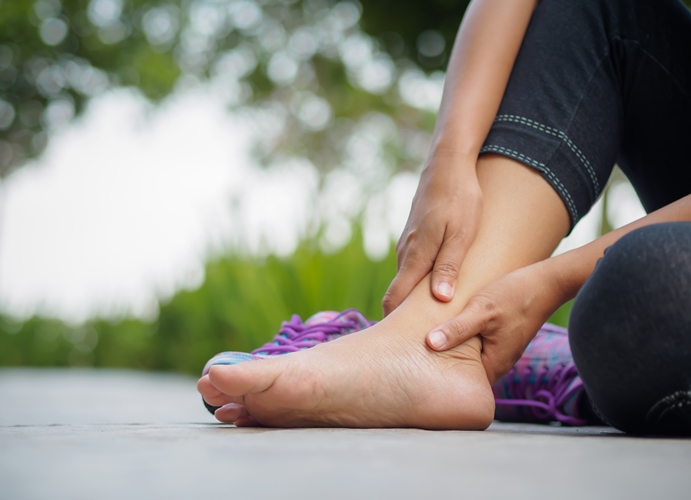Growing up with von Willebrand disease
Tue 14 Dec 2021
Simoni tells her personal story of growing up with type 3 (severe) VWD - the challenges of injuries and periods and learning to manage her own prophylaxis treatment.
Hi, I'm Simoni, and I have type 3 von Willebrand disease (VWD), the most severe and rarest form of the disease. Consequently, I have little to no von Willebrand factor and low levels of factor VIII (8). When I was a child, my parents noticed that I bruise easily from daily activities and was often susceptible to minor cuts, which would bleed for a long time. They then proceeded to have me tested, and it was found that I have von Willebrand's at the age of three years old.
 Photo: Simoni
Photo: Simoni
MY TREATMENT
Some of my symptoms include a longer bleeding and clotting time for injuries, easy bruising, heavy nosebleeds, recurring joint bleeds and heavy menstrual bleeding, resulting in anaemia and fatigue. At eleven years old, I was started on prophylactic treatment of intravenously administered clotting factor concentrate every alternate day. The support of my haemophilia nurse was and continues to be instrumental in my treatment from the very beginning.
The factor was first administered by help of my nurse, followed by my parents who administered it regularly until I learned to administer it myself recently. My current treatment also involves taking tranexamic acid tablets during bleeding episodes to supplement my regular treatment, which helps slow down the dissolution of blood clots.
MANAGING INJURIES
In early primary school, when I was not on regular treatment, I was highly vulnerable to serious injuries, particularly in sport classes. I did limit my participation in sports to non- or low-impact activities as a measure of caution, which was not a significant problem as I'm not naturally a sporty person.

In my experience, I found it beneficial to let school personnel and close friends know about my bleeding disorder and inform them of the specifics of managing a serious bleed or injury so that we could act promptly to minimize the severity of any injury.
An event which highlighted the necessity of this was when I was eight years old whilst playing basketball, my ankle was hit by the ball with high impact. As there was no immediately visible injury, I did not pay much attention until I got home that afternoon, by which time my ankle was severely swollen. After further investigation, we found that I had a ligament injury, which developed into a recurrent issue. If we had taken prompt action then, perhaps the long-term impacts would have been eased.
Prior to beginning prophylactic treatments, I would be treated in a children's hospital and would often have a cannula in my arm for a few days to enable daily treatment. Due to von Willebrand's, I have found that my recovery period from major injuries is quite lengthy. For example, about three to four weeks for an ankle injury, sometimes longer, depending on the severity.
Due to recurring injuries, in particular joints, physiotherapy has become a key part of recovery and helps to build muscle strength to prevent further trauma. Also, nosebleeds can be quite heavy and are difficult to stop, for which I use a nasal spray and administer factor treatment as soon as possible.
As a result of having a bleeding disorder, micro bleeds in joint do result in frequent joint pain and sometimes swelling, which I manage through rest and ice compression along with regular treatment.
MANAGING PERIODS
Upon beginning menstruation, I experienced very heavy periods causing severe anaemia and was required to go on hormonal medication to control it. I remained on medication for approximately two and a half years, after which I was able to move forward without medication.
LIVING WITH VWD
Also, when I know I will be participating in strenuous and high-risk activities, it has been essential to ensure that I have had a dose of my prophylactic factor treatment earlier the same day, not only to mitigate the impact of any serious injury, but also to possibly reduce the time which I might need to recover. As a precaution to be able to manage any injuries or bleeding promptly, I keep a kit with pressure wrap bandages, medications and Band-Aids close by when traveling anywhere. There have been numerous occasions in which my kit has come in handy, and it has been a key part of living with von Willebrand's.
Prophylaxis has proven to be a very effective method of managing my bleeding disorder, enabling me to participate in daily activities with normality. I do still maintain a degree of caution and try to prevent major injuries or be swift in managing any bleeding events. Prophylaxis is now a regular part of my life and is a monumental component of my experience and living with the disease.
Additionally, I am hopeful that a recombinant, long-acting subcutaneous injection will replace intravenous factor in the future, similar to that available for haemophilia treatment, which can be easily and less frequently administered.
Overall, in my experience, living with von Willebrand's does not mean that you should feel restricted or disadvantaged in any way. While it is important to know my limits, learning to manage the disease and symptoms effectively and bringing immediate attention to injuries is even more vital. And with time, I've learned to integrate the symptoms and treatment as a part of daily life.
I think there is a lot of fear and uncertainty that both a person living with the disease and perhaps their friends or family might have. So, I think it's important to cultivate and maintain a support system and try to develop a greater awareness of your condition for those around you.
Thank you.
This is a transcript of Simoni’s presentation at the 20th Australian Conference on Haemophilia, VWD and Rare Bleeding Disorders. You can watch Simoni’s presentation on the Conference portal at https://haemophilia.delegateconnect.co.
Stock photos of girls playing and ankle injury.